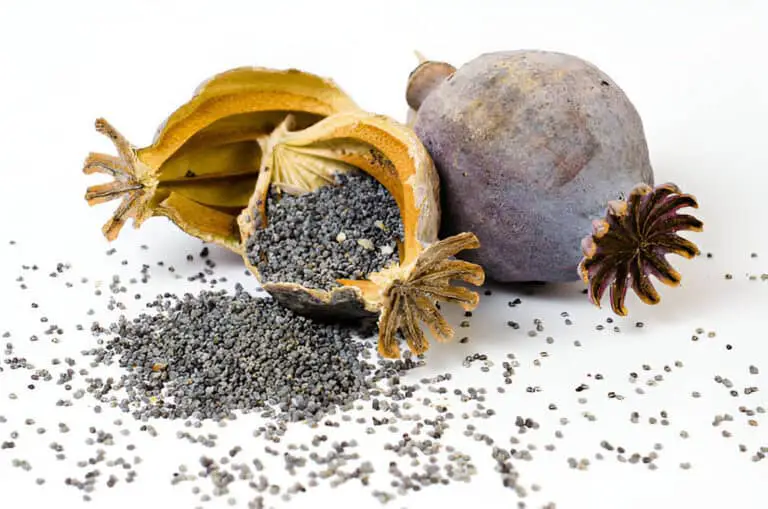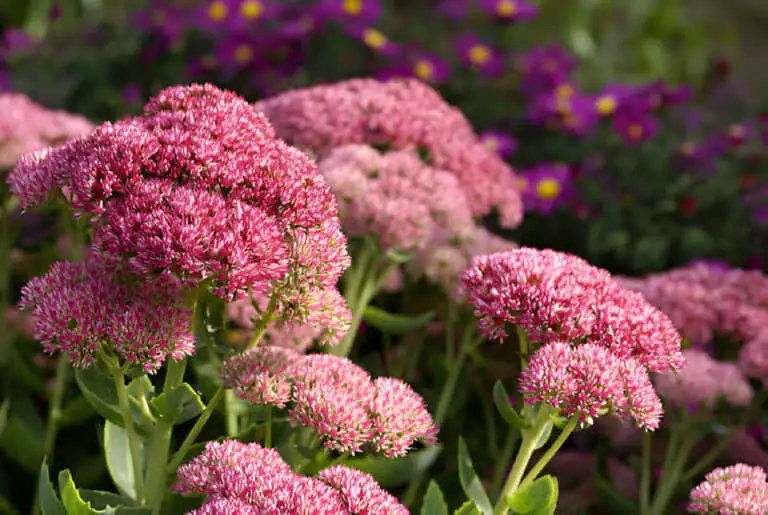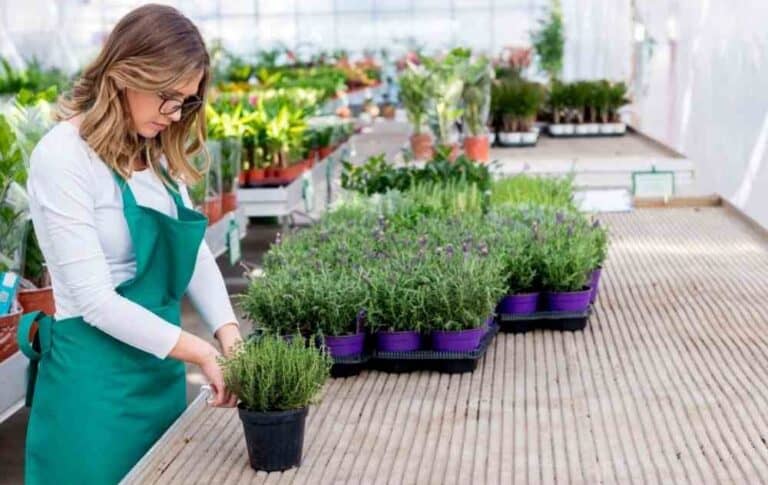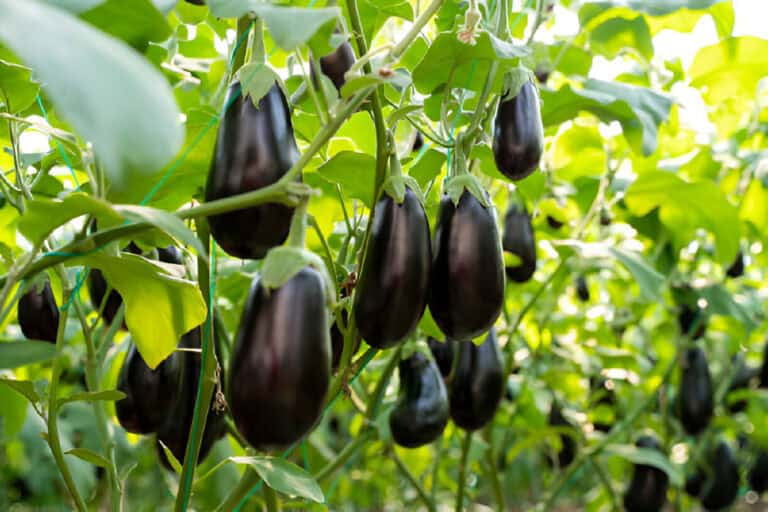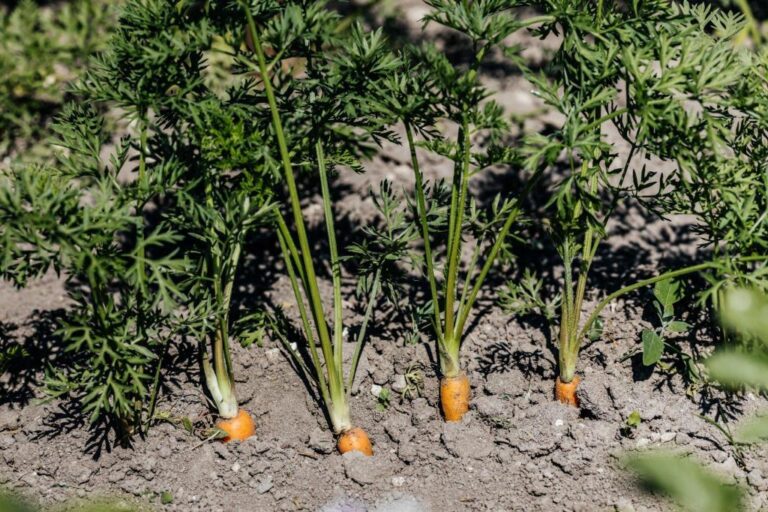How Tall and Big Do Brussel Sprouts Grow? Plant Height and Weight
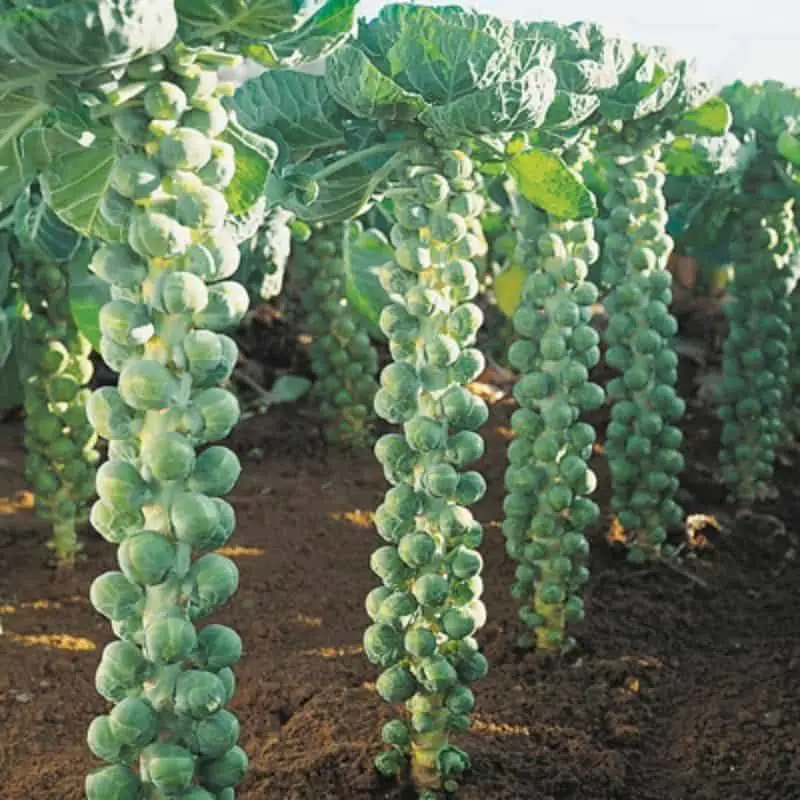
Are you ready to delve into the world of Brussels sprouts and unlock the mysteries of their growth? Picture a garden filled with vibrant green plants, standing tall and proud, bearing plump and flavorful miniature cabbages. If you’ve ever wondered just how tall and big these captivating vegetables can grow, you’re in for a treat.
In this article, we will take you on a journey through the fascinating world of Brussels sprouts, exploring their impressive plant height and weight. Prepare to be amazed as we unravel the secrets to cultivating these incredible plants in your own backyard. Whether you’re a seasoned gardener or just starting out, this guide will equip you with the knowledge and insights you need to witness the awe-inspiring growth of Brussels sprouts.
So, let’s roll up our sleeves, put on our gardening gloves, and embark on this green adventure together!
Introduction to Brussels Sprouts and their Growth Characteristics
Brussels sprouts, scientifically known as Brassica oleracea var. gemmifera, are part of the Brassicaceae family, which includes other cruciferous vegetables like cabbage and broccoli. These small, round vegetables resemble miniature cabbages and grow in tight clusters along the stems of the plant.
They are typically harvested when the sprouts reach their maximum size, providing a delicious and nutritious addition to various culinary dishes.
Understanding the growth characteristics of Brussels sprouts is essential for both home gardeners and commercial farmers. By recognizing the factors that affect their height and size, one can optimize cultivation practices to achieve the desired outcome.
Factors Influencing the Height and Size of Brussels Sprouts
The growth of Brussels sprouts is influenced by a combination of environmental and genetic factors. Let’s take a closer look at each of these factors:
Environmental Factors
- Sunlight: Brussels sprouts thrive in full sun, ideally receiving at least six hours of direct sunlight per day. Insufficient light can lead to elongated stems and smaller sprouts.
- Temperature: These vegetables prefer cool weather. Moderate temperatures, between 60°F and 65°F (15°C and 18°C), are optimal for their growth. Extremely hot temperatures can stunt their development, while freezing temperatures can damage the plants.
- Soil Quality: Brussels sprouts thrive in well-draining, fertile soil with a pH between 6.0 and 7.5. Rich soil provides the necessary nutrients for robust growth and larger sprouts.
Genetic Factors
- Plant Variety: Different Brussels sprouts varieties exhibit variations in height and size. Some varieties are naturally compact, producing shorter plants with smaller sprouts, while others tend to grow taller and yield larger sprouts.
- Seed Quality: The quality of the seeds used for planting can also influence the growth and size of Brussels sprouts. High-quality seeds sourced from reputable suppliers often yield plants with better growth potential.
Plant Height of Brussels Sprouts
Brussels sprouts are known for their upright growth habit, reaching impressive heights under optimal conditions. On average, a fully matured Brussels sprout plant can grow anywhere between 2 and 4 feet in height. However, it’s important to note that various factors, including environmental conditions and the specific variety being grown, can influence the final height of the plant.
When it comes to maximizing the height of your Brussels sprout plants, providing them with adequate space is crucial. Planting them too closely together can result in stunted growth and smaller sprouts. Aim for a spacing of at least 18 to 24 inches between each plant to allow them room to flourish.
Weight of Brussels Sprouts
While the height of the plant is impressive, the weight of Brussels sprouts can also amaze gardeners. As the plant matures, it produces numerous sprouts along the stem, each varying in size. The average weight of an individual Brussels sprout ranges from 1 to 2 ounces. However, under ideal growing conditions, some larger sprouts can weigh up to 3 ounces or more.
To ensure your Brussels sprouts develop their maximum weight potential, it’s essential to provide them with proper care and maintenance. Adequate sunlight, regular watering, and nutrient-rich soil are vital for healthy growth and optimal sprout development.
Understanding the Growth Stages of Brussels Sprouts
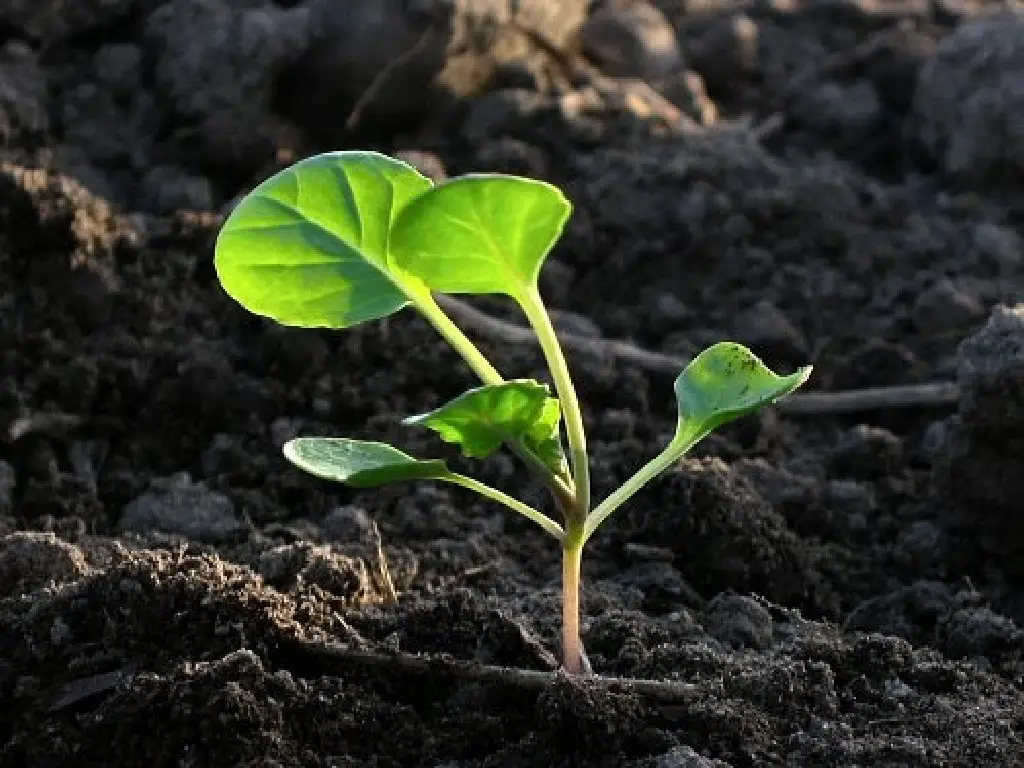
Brussels sprouts undergo several distinct growth stages from seed to harvest. Understanding these stages is crucial for proper cultivation. Let’s explore the three main growth stages of Brussels sprouts:
1. Germination and Early Growth
After planting the seeds, germination occurs within 7 to 10 days under optimal conditions. During this stage, the seeds sprout and develop into small seedlings with their first set of true leaves.
2. Vegetative Growth and Leaf Development
Once the seedlings establish themselves, they enter the vegetative growth phase. The plants develop additional leaves and grow taller, forming a dense canopy of foliage. This stage is crucial for establishing a healthy plant structure.
3. Formation and Maturation of Sprouts
As the plants continue to grow, small sprouts start to develop along the stems, nestled in the leaf axils. These sprouts gradually increase in size and become more tightly packed. Harvesting typically occurs when the sprouts reach their desired size and firmness.
Common Brussels Sprouts Varieties and their Growth Characteristics
There are several popular varieties of Brussels sprouts, each with its unique growth characteristics. Here’s an overview of some common varieties and their distinct features:
| Variety | Height and Size Characteristics |
| ‘Long Island’ | Tends to be shorter in height, producing small to medium-sized sprouts. |
| ‘Diablo’ | Compact plants with medium height, yielding medium-sized sprouts. |
| ‘Trafalgar’ | Tall plants with a robust structure, producing large-sized sprouts. |
| ‘Jade Cross’ | Medium height plants, known for their uniform, medium-sized sprouts. |
| ‘Falstaff’ | Compact plants with good branching, resulting in small to medium-sized sprouts. |
It’s important to note that these characteristics may vary based on specific growing conditions and cultivation practices.
By understanding Brussels sprouts growth stages, optimal conditions, and variety characteristics of Brussels sprouts, you can effectively cultivate these delicious vegetables with confidence.
Whether you’re a home gardener or a commercial farmer, incorporating this knowledge into your cultivation practices will help you achieve desirable plant heights and robust sprout sizes.
Managing the Height and Size of Brussels Sprouts
Controlling the height and promoting proper sprout growth are key aspects of managing Brussels sprouts effectively. Let’s explore some techniques to achieve this:
1. Pruning Techniques
Pruning is a useful method for managing the height of Brussels sprouts. By selectively removing the top portion of the plant, you can limit vertical growth and encourage lateral development, resulting in more sprouts. Pruning should be done once the plants have reached a height of about 24 inches (60 cm).
2. Fertilization Methods
Proper fertilization is essential for promoting optimal size and weight in Brussels sprouts. Incorporate organic matter, such as compost or well-rotted manure, into the soil before planting. Additionally, provide a balanced fertilizer with a higher phosphorus content to support root development and sprout growth. Apply the fertilizer according to package instructions and avoid over-fertilization, as it can lead to excessive foliage growth instead of robust sprouts.
3. Pest and Disease Management
Pests and diseases can impact the growth and size of Brussels sprouts. Implementing effective pest management strategies, such as regular inspections, using insecticidal soaps or organic insecticides, and employing physical barriers, can help protect the plants.
Similarly, practicing good sanitation, crop rotation, and providing proper air circulation can minimize the risk of diseases. Promptly address any pest or disease issues to prevent stunted growth and smaller sprouts.
Harvesting Brussels Sprouts at the Right Time
Harvesting Brussels sprouts at the appropriate time is crucial to ensure optimal flavor and texture. Here’s what you need to know:
1. Indicators of Sprout Maturity
Observe the sprouts closely to determine their maturity. Sprouts are ready for harvest when they reach about 1 to 1.5 inches (2.5 to 3.8 cm) in diameter and feel firm to the touch. The lower sprouts on the stalk usually mature earlier, while the upper ones continue to develop.
2. Harvesting Techniques and Tips
To harvest Brussels sprouts, gently twist or cut the sprouts off the stalk, starting from the bottom and working your way up. Remove any loose or discolored leaves attached to the sprouts. It’s advisable to harvest sprouts gradually as they mature to extend the harvest period.
3. Dealing with Late or Early Maturing Sprouts
Sometimes, Brussels sprouts may exhibit inconsistent maturity due to variations in growth patterns or environmental conditions. If you encounter late or early maturing sprouts within the same plant, you can selectively harvest the mature sprouts while leaving the others to develop further. This allows for a more extended harvest period.
Common Challenges in Growing Brussels Sprouts and Their Impact on Size
Growing Brussels sprouts can come with challenges that affect the size and growth of the plants. Here are some common issues to be aware of:
1. Pests and Diseases
Pests such as aphids, cabbage worms, and caterpillars, as well as diseases like clubroot and black rot, can significantly impact the size and growth of Brussels sprouts. These issues can weaken the plants, hinder nutrient absorption, and restrict their overall development. Implementing pest management strategies, such as using insecticidal sprays or introducing beneficial insects, and practicing proper sanitation can help mitigate these challenges.
2. Nutrient Deficiencies or Imbalances
Imbalances in soil nutrients can lead to stunted growth and smaller sprouts. Brussels sprouts require a well-balanced supply of essential nutrients, including nitrogen, phosphorus, and potassium. Conduct a soil test to assess nutrient levels and make amendments accordingly. Regularly fertilize the plants with a balanced fertilizer to provide them with the necessary nutrients for robust growth.
3. Stress Factors
Stress factors, such as inconsistent watering, extreme temperatures, or overcrowding, can adversely affect the size and development of Brussels sprouts. Ensure the plants receive consistent moisture, avoiding both drought stress and waterlogging. Provide adequate spacing between plants to allow for proper air circulation and prevent overcrowding. Additionally, protect the plants from extreme temperatures by providing shade or using protective coverings when necessary.
Maximizing the Size and Weight of Brussels Sprouts
To achieve a larger and heavier Brussels sprout harvest, consider implementing the following practices:
1. Optimal Plant Spacing and Density
Proper plant spacing is essential to providing each Brussels sprout plant with enough room to grow and develop. Follow the spacing recommendations for the specific variety you are cultivating. Adequate spacing ensures that the plants can access sufficient sunlight, nutrients, and water, promoting larger and healthier sprouts.
2. Crop Management Practices
Adopting effective crop management practices can contribute to larger sprout sizes. Regularly remove weeds around the Brussels sprout plants to reduce competition for resources. Monitor the soil moisture levels and irrigate consistently to prevent stress. Applying a layer of mulch around the plants can help conserve moisture and regulate soil temperatures.
3. Growth-Enhancing Techniques or Supplements
Consider utilizing growth-enhancing techniques or supplements to maximize the size and weight of Brussels sprouts. This may include applying foliar sprays or soil amendments rich in micronutrients, using organic growth stimulants, or employing specific growth-promoting practices recommended for Brussels sprout cultivation.
Optimal Growing Conditions for Brussels Sprouts
Creating optimal growing conditions is vital for maximizing the height and size of Brussels sprouts. Here are some factors to consider:
- Sunlight Requirements and Ideal Temperature Range: Select a planting location that receives full sun exposure for at least six hours a day. This ensures that the plants receive adequate light for photosynthesis and overall growth. Additionally, Brussels sprouts prefer moderate temperatures between 60°F and 65°F (15°C and 18°C) for optimal development. Avoid extreme heat or cold, as it can hinder their growth.
- Soil pH, Drainage, and Nutrient Needs: Brussels sprouts thrive in well-draining soil with a pH level between 6.0 and 7.5. Test your soil to determine its pH and make necessary amendments to achieve the optimal range. Good drainage is crucial to prevent waterlogged conditions, which can lead to root rot. Incorporate organic matter, such as compost, into the soil to provide essential nutrients for healthy growth.
- Watering and Irrigation Practices: Brussels sprouts require consistent moisture throughout their growth cycle. Adequate watering is essential, especially during dry periods, to prevent stress and promote optimal growth. Aim for 1 to 1.5 inches of water per week, ensuring that the soil remains evenly moist but not waterlogged. Mulching around the plants can help retain moisture and prevent weed growth.
FAQs
Can I grow Brussels sprouts in containers or pots?
Yes, Brussels sprouts can be grown in containers or pots. Choose large containers with good drainage and provide proper support as the plants grow.
Are there any companion plants that benefit Brussels sprouts’ growth?
Yes, some beneficial companion plants for Brussels sprouts include herbs like thyme and mint, as well as other Brassica family members like kale and collard greens.
What are the common pests and diseases that affect Brussels sprouts?
Common pests include aphids, cabbage worms, and cabbage loopers. Diseases such as clubroot and black rot can also affect Brussels sprouts.
How can I encourage larger sprouts on my Brussels sprouts plants?
To encourage larger sprouts, ensure the plants have adequate spacing, provide sufficient nutrients through fertilization, and maintain consistent moisture levels.
Can I freeze Brussels sprouts for long-term storage?
Yes, you can freeze Brussels sprouts for long-term storage. To freeze them, blanch the sprouts in boiling water for a few minutes, then transfer them to an ice bath to stop the cooking process. Drain them well and place them in airtight freezer bags or containers. Properly frozen Brussels sprouts can last up to 12 months in the freezer.
How do I start growing Brussels sprouts from seeds?
Start by sowing Brussels sprouts seeds indoors 6-8 weeks before the last frost date. Plant the seeds in seed-starting trays or containers filled with potting soil. Keep the soil consistently moist and provide sufficient light. Once the seedlings have grown a few inches tall and the risk of frost has passed, transplant them into the garden, spacing them adequately.
What are the signs of under or over-watering Brussels sprouts?
Under-watering may cause wilted leaves, stunted growth, and dry soil. Over-watering can lead to yellowing leaves, root rot, and poor plant health. It’s important to maintain a balance and provide adequate, consistent moisture.
When should I expect Brussels sprouts to start forming sprouts?
Brussels sprouts usually start forming sprouts 80-100 days after planting. However, the exact timing can vary based on the variety, growing conditions, and climate.
Do Brussels sprouts continue to grow after harvest?
No, Brussels sprouts do not continue to grow after harvest. The sprouts you harvest are the final size they will reach. However, the remaining foliage of the plant can still be used as a nutritious addition to compost.
How many Brussels sprouts can I expect per plant?
The number of sprouts per plant can vary, but on average, a mature Brussels sprout plant can yield around 50-100 sprouts, depending on the variety and growing conditions.

